#Ant Colony Growth
Explore tagged Tumblr posts
Text
🐜✨ Master the Stockpiling Mission in Empire of the Ants! 🌟 Gather resources, build your colony, and defend against all enemies with our detailed guide. Are you ready to take your gaming skills to the next level? Check it out now!
#Empire Of The Ants#Stockpiling Mission#Gaming Tips#Ant Colony Strategy#Resource Management#Game Guide#Ants Gameplay#Colony Defense#Survive And Gather#Ant Colony Simulator#Gamer Strategies#Collect Resources#Game Objectives#Improve Gaming Skills#Conquer Missions#Ant Simulation Game#Video Game Tips#Ant Game Strategies#Gaming Community#Gamer Life#Strategic Resource Gathering#Ant Hoarding#Mission Based Gaming#Gamers Guide#Expert Gameplay#Resource Stockpiling#Game Walkthrough#Defend Your Colony#Ant Colony Growth#Gaming Success
2 notes
·
View notes
Text
A Fallout lore youtube video with 314 views just informed me of Shalebridge, a location in Fallout 3 with an unmarked quest to defend a colony of small, friendly ants from an invading colony of the typical murderous ants found throughout the rest of the game. You can also use a further science/medicine check to boost the growth of the friendly ant colony to ensure their future success; in exchange, the ants will allow you to harvest a respawning bounty of ant nectar for the remainder of the game. Also noteworthy is that the friendly ant colony is denoted by extensive fungal growth around the entrance, in what I suspect is a nod to ant-fungus mutualism.
Anyway I can't help but interpret this as the eventual creation myth of a sentient FEV-induced mutant-ant civilization that, a hundred or so years down the line, will be telling stories about a benevolent giant who strode forth to smite their enemies in their hour of greatest need, before delivering unto them the mana of the old gods, Prometheus style. In this way and in many others Bethesda Fallout is consistently best at the margins
154 notes
·
View notes
Text

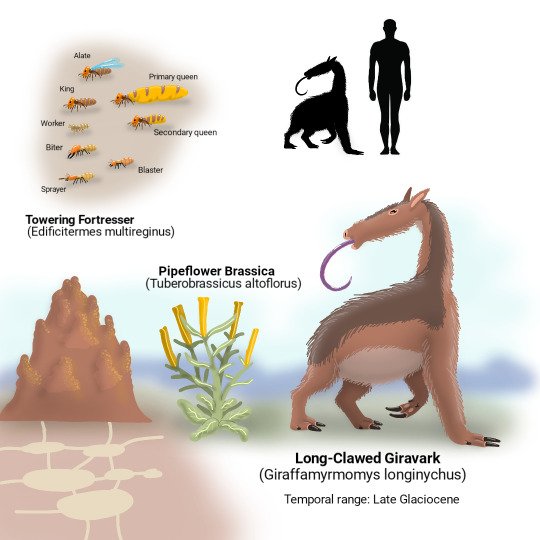
The girats, an early lineage of hamtelopes adapted for high-browsing, produced several unusual lineages in the Glaciocene even as their numbers, diversity and range dwindled. One group that had survived, and fared well across the Therocene, were the giraards: an unusual clade who found a unique use for the long prehensile tongues they used to feed on leaves and branches: to supplement their diet with insects, especially ants and termites, first from the ones that dwelled in the trees, and eventually other mound-dwelling species on the ground.
The girats as a whole would generally not fare well in the Late Glaciocene, as the cooling climes and unpredictable bouts of weather both led to palatable trees dying off and their insect prey living deeper underground. To adapt, many species soon abandoned their crude, unwieldy cheek-horns and battering-ram heads, and switched to digging with their hooves: ones that, in time, lengthened into blunt, shoveling claws that they used to burrow into their subterranean colonies to track them down.
The long-clawed giravark (Giraffamyrmomys longinychus) was one of the last surviving species, and a typical member of the remaining members as of the Late Glaciocene. They thrived in temperate regions of Arcuterra, and became specialist feeders of basically only two food items: the commonly-found descendants of the bombermite, the towering fortresser (Edificitermes multireginus) and the seeds and nectar of the pipeflower brassica (Tuberobrassicus altoflorus).
Towering fortressers live in large, underground networks of tunnels and chambers, with their large, rock-hard mounds being used like chimneys for thermal regulation. As their environments can get rather cold especially during the night, the fortressers insulate their homes with denser walls and build their mounds oriented at an angle to the sun's path across the sky: catching its rising and setting rays to heat up the colony via its chimneys, with the heat remaining inside for longer. Should nights get too cold, they can enter a state of torpor, reducing activity and metabolism to save energy, and resume their progress once the weather warms.
Like their bombermite ancestors, the fortressers have three kinds of soldiers: large-headed biters, acid-squirting sprayers, and self-destructing blasters, all to defend against various different enemies: be it ants, ratbats, insectivorous furbils, or giraards. While the long-clawed giravark has done away with its heavy facial plating, it has not lagged in the arms race: its long snout puts its vulnerable eyes and ears further from its mouth, while the leathery skin on its snout can close its nostrils to prevent retaliating insects from entering. Its thick facial fur make it difficult for the termites to climb its face, struggling to navigate what is to them a dense forest of towering hairs.
The most unusual trait of the fortressers, hoever, is the way they reproduce. Like other termites, a king and a queen are sole breeders in a colony of sterile workers and soldiers. However, queens have a unique ability to lay unfertilized eggs: which, unlike hymenopterans which hatch into male drones, instead hatch into females: genetically identical clones of the queen herself. This ability allows her to produce young without the king's genes: allowing them to be replacement queens the king can mate with should she die, without the risk of inbreeding should he mate with his own daughters. Some of these satellite queens even move out of the colony and find mates from other colonies: ensuring the genes of these one queen are spread far and wide.
These termites have a relationship too with pipeflower brassicas. They guard its roots from underground pests like worms or beetle larvae that target its energy-rich tuber-like roots and fertilize it with their droppings, and in return the plant produces small nutritious growths from its roots in the winter where food is scarce: enticing the termites to keep protecting it as a valuable resource. This leads to it commonly growing within the vicinity of termite mounds: and thus, attracting the attention of giravarks as well.
The pipeflower brassica soon adapted to exploit this too, and fills its fertilized flowers with plenty of tiny seeds, which it then coats in the interior of its flower tubes with sticky nectar. Using their long tongues, the giravarks too feed on the nectar as a source of carbohydrates to supplement their protein-rich insect diet: and ensuring the seeds are spread near other termite mounds in the giravark's droppings when it approaches a mound to feed.
Unfortunately, changing climates in the Glaciocene's end would ultimately disrupt this strange three-way relationship between predator, prey, and a plant that symbiotically benefits both. As the warming climates soon turned much of Arcuterra into savannah and desert, the pipeflower would eventually dwindle, and soon die out. Soon would decline the termites, and with them the giravarks and other giraards too, and while enough of the towering fortressers would survive deep underground to later re-adapt to a drier world, giving rise to the cathedral mites feeding off desert adapted cacti-like grasses called saggros, the giraards would not be so fortunate: and ultimately vanish at the dawn of the Temperocene. Their legacy as specialized insectivores would not end with them, however, as in the Temperocene a whole varied array of myrmecophages would evolve from all sorts of lineages to take their place in the vacant niche, across the many continents: long-snouted zingos, specialized rhinocheirids, dwarf hammoths and various rattiles, feasting on the bounty of insects available during the tropical climate of the Temperocene era.
--------
#speculative evolution#speculative biology#speculative zoology#spec evo#hamster's paradise#species profile
38 notes
·
View notes
Text
Round 2 - Arthropoda - Insecta
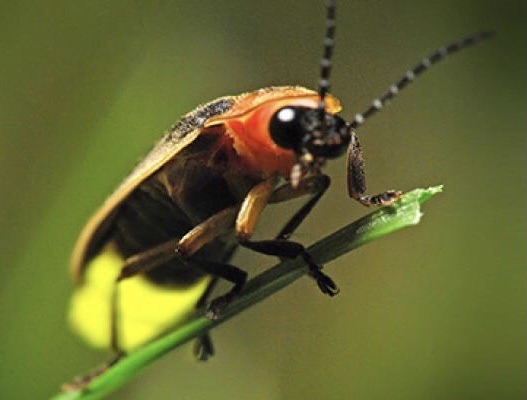


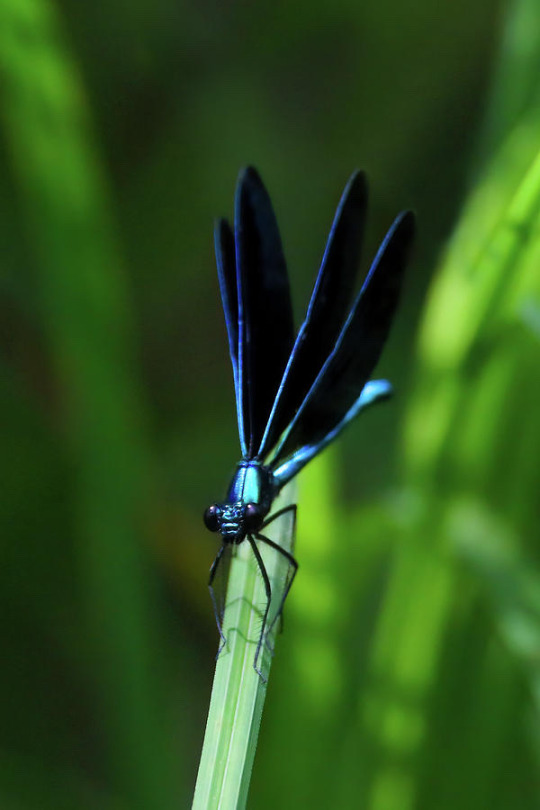
(Sources - 1, 2, 3, 4)
Our last athropods, the hexapod crustacean class Insecta, is one of the most successful groups of animal on earth. They are the most diverse, with over a million known species, comprising more than half of all eukaryote (animals, plants, fungi, etc) species, making them the “Default Animal.” They are comprised of three main groups: Archaeognatha (“Jumping Bristletails”), Zygentoma (“Silverfish” and “Firebrats”), and Pterygota (winged or secondarily wingless insects).
As hexapods, insects have a three-part body plan: head, thorax with 6 legs, and abdomen. They have compound eyes (some in addition to ocelli) and a pair of antennae. Many groups have 1-2 pairs of wings as adults. Insects have many means of perceiving the world: compound eyes and ocelli for seeing, tympanal organs for hearing, and receptors on the antennae and mouthparts for smelling. They live in almost every environment and occupy almost every niche. Many are aquatic, or have aquatic larvae. They are the first animals to have evolved flight. Some are solitary, some are social, some live in large, well-organized colonies. Some communicate with pheromones, some with sounds, some with bioluminescence. Some are venomous, some are poisonous. Most insects hatch from eggs, though some are birthed live. Some hatch as miniature adults, some go through a partial metamorphosis in which the larval stage looks vastly different from the adults, and some go through a complete metamorphosis in which a nearly immobile pupa is formed. Some insects provide maternal care. Some are carnivores, some herbivores, some omnivores, some parasites. Some spend most of their lives in their larval stage, and don’t even feed as adults. Due to the high diversity of insects, it would be impossible for me to summarize them further!
Fossil insects are known from the Paleozoic Era, during which they achieved large sizes, such as the giant dragonfly-like Meganeuropsis permiana, with an estimated wingspan of up to 710 millimetres (28 in), and a body length from head to tail of almost 430 millimetres (17 in).

Propaganda under the cut:
Insects are absolutely critical in all ecosystems, forming the base of the food chain, turning and aerating soil, controlling pests, encouraging or controlling the growth of plants, scavenging and recycling biological materials, and creating topsoil. Without insects, our planet would die.
There are many contenders for “largest insect.” The Giant Stick Insect (Phobaeticus serratipes) is the longest insect in the world, with specimens recorded at over 56 cm (22 inches), including their legs. The Giant Weta (Deinacrida heteracantha) is the heaviest, with a record of 2.5 ounces. Queen Alexandra’s Birdwing (Ornithoptera alexandrae) has the largest wingspan, which reaches up to 30 cm (1 foot) wide.
Meanwhile, the smallest known adult insect is a parasitic wasp, Dicopomorpha echmepterygis, commonly called “Fairyflies”. Males are wingless, blind and measure only 0.127 mm long.
Many insects are popular pets, including various species of mantis, cockroach, beetle, moth, and ant! Some are even domesticated, including silk moths and honeybees.
Many insects are eaten by humans, and farming insects for food is considered more sustainable than farming large chordates. These farmed arthropods are referred to as “minilivestock.”
Shellac is a resin secreted by the female Lac Bug (Kerria lacca) on trees in the forests of India and Thailand. It is used as a brush-on colorant, food glaze, natural primer, sanding sealant, tannin-blocker, odour-blocker, stain, and high-gloss varnish. It was once used in electrical applications as an insulator, and was used to make phonograph and gramophone records until it was replaced by vinyl.
One of the biggest ecosystem services insects provide for humans is pollination. Crops where pollinator insects are essential include brazil nuts, cocoa beans, and fruits including kiwi, melons, and pumpkins. Crops where pollinator insects provide 40-90% of pollination include avocados, nuts like cashews and almonds, and fruits like apples, apricots, blueberries, cherries, mangoes, peaches, plums, pears, and raspberries. In crops where pollinators are not essential they still increase production and yield. Important pollinators include bees, flies, wasps, butterflies, and moths.
Many insects are sacred to humans. In Ancient Egypt, scarab beetles were used in art, religious ceremonies, and funerary practices, and were represented by the god Khepri. Bees supposedly grew from the tears of the sun god Ra, spilled across the desert sand. The Kalahari Desert's San People tell of a legendary hero, Mantis, who asked a bee to guide him to find the purpose of life. When the bee became weary from their search, he left the mantis on a floating flower, and planted a seed within him before passing from his exhaustion. The first human was born from this seed. Dragonflies symbolize pure water in Navajo tradition. In an Ancient Greek hymn, Eos, the goddess of the dawn, requests of Zeus to let her lover Tithonus live forever as an immortal. Tithonus became immortal, but not ageless, and eventually became so small, old, and shriveled that he turned into the first cicada. Another hymn sings of the Thriae, a trinity of Aegean bee nymphs. Native Athenians wore golden grasshopper brooches to symbolize that they were of pure, Athenian lineage. In an Ancient Sumerian poem, a fly helps the goddess Inanna when her husband Dumuzid is being chased by galla demons. In Japanese culture, butterflies carry many meanings, from being the souls of humans to symbols of youth to guides into the afterlife. Ancient Romans also believed that butterflies were the souls of the dead. Some of the Nagas of Manipur claim ancestry from a butterfly. Many cultures use the butterfly as a symbol of rebirth. And the list goes on…
#sorry I had to copy paste some propaganda from the Arthropoda poll I’m tired and it’s A Lot#anyway Chordata tomorrow!#round 2#arthropoda#animal polls#insecta
78 notes
·
View notes
Text
(Edited 1/7/25, changed from “Grand Librarian” to “Divine Astro” (aka Divine Astrologist)) (Also added more details on how the Moth Colony works!! 🤍)
Little moth oc! Her name is Mothi!
This is an insert for The Rehabilitation of Death/my own au called Cult Of The Stars
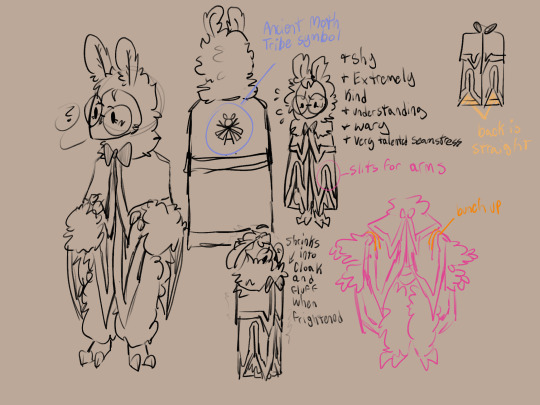
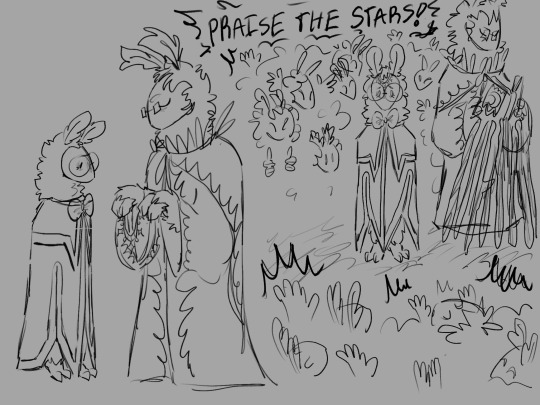
In my cotl au, some species has its own colony. ____________________________________
Moth Colony’s Backstory
Moths had their own colony, and were sworn enemies with butterflies. butterflies worshiped the sun, and moths worshiped the moon.
Moths were famous for making the most beautiful clothing and accessories, anything with silk. They were one of the richer colonies for this reason. (Silk comes out of moth’s stomach scales and wrists, easier to use while sewing.)
They had an infamous reputation for their love of books and history, along with their clothes making. For these reasons, the leaders of Moth Colonies were Divine Astro’s (Divine Astrologist) and Supreme Seamstresses. Divine Astros were always male and Supreme Seamstresses were always female.
Ordinary commoner males have one primary job they usually work as;
Astronomer
Ordinary commoner females have one primary job they usually work as;
Tailors
Being crowned a Divine Astro or a Supreme Seamstress doesn’t mean king and queen. Both the Astro and the Seamstress do not have to be wed or in a relationship to rule together.
Additionally, being crowned alters the hormones and dna in the system of the moth, which makes the moth gain many positive attributes to their physical properties.
Traits and physical changes + their role in the colony include:
Supreme Seamstress:
Able to produce 10x more silk
Faster sewing rate
More creative clothing ideas
Oversees all clothing being made that isn’t being made by her
Produces eggs 4x the amount
Basically a queen ant or a queen bee
Extremely slower growth rate, longer life
Divine Astrosologists:
Able to produce 10x more silk
Makes silk paper 10x faster for books
An Astrologist, Astronomer, and Diviner
Binds books with own special threads to make them extremely strong
Oversees all astrological books being made
Oversees all astrological books in library
Able to tweak the details in the books as they see fit
Extremely slower growth rate, longer life
Divine Astro & Supreme Seamstress’s responsibilities:
Divine Astrologist:
Astrologist, Astronomer, Diviner.
Creates star maps.
Leads most Constellation Worship Congregations.
Manages shipments from other colonies.
In charge of punishing dissenters and problematic behavior.
In charge of money, trading, finance, construction.
Leads sacrificial worship. (A very rare practice that moths only use when the colony is at its lowest.)
Crowns new Supreme Seamstresses or Divine Astros
Predicts the past, present, and future using the stars and divination
Supreme Seamstress:
Creates and sews luscious star-themed clothing.
Leads some Constellation Worship Congregations.
In charge of wedding, death, and birth Ceremonies.
Blesses newborns, elderly, and sickly.
Sometimes cooks heavenly dinnertime meals on very rare occasion. (An ancient recipe, somehow able to heal almost all viruses from a moth’s body…)
Helps needlewomen with better ideas for sewing
In charge of leading military attacks. (89% success rate compared to Divine Astrologist’s 45%)
Crowns new Supreme Seamstresses or Divine Astros
Works, trades, and deals with other colonies to get sheep wool, web, hemp, cotton, bamboo, camel wool, alpaca wool, cork, leather, flax, ramie, etc. etc.
Moths worked with the lambs the most, combining wool and silk to make lush and higher quality clothing to sell and wear. And the moths helped try to evacuate the lambs when the mass murder was occurring, and sadly, that’s how Mothi’s mother, a Supreme Seamstress, lost her life. With no father to account for, Mothi was now orphaned.
____________________________________
Mothi’s Backstory
At a young age (4 years normally, 12 in moth years (since moths have a shorter lifespan when ordinary and not a Supreme Seamstress or a Divine Astro. Kinda like how a queen bee lives longer than regular bees)), Mothi was crowned a Supreme Seamstress. Too young to make eggs to expand the colony, a Supreme Seamstress from another colony made a deal to supply eggs for both colonys until Mothi reached a mature age to safely make eggs of her own.
Sadly, 3 years later, both colonies were hit with a surprise attack from a large Butterfly Colony. This killed thousands in both Moth Colonies, killing both the Divine Astros from the 2 Colonies and the Supreme Seamstress that helped provide to both Moth Colonies. Mothi fled with her life.
Because Mothi was crowned a Supreme Seamstress, had a slower growth rate. For the next 35 years, she lived on her own. Unable to find another Moth Colony to join. She was now 14.
She had found a beautiful gold necklace once during her journey, dropped by a pony who was traveling back to an odd looking colony that had many different species. Stealing it, Mothi ran off with it around her neck, unaware that she had now stopped aging from the necklace.
Thousands upon thousands of years pass.
At one point, the necklace was stolen from her from a very rude starfish. But Mothi couldn’t catch them again. So she got older without the necklace, her growth rate still slowed from her being crowned Supreme Seamstress all those millennia ago.
At one point, another hundred and five years later, at the age of 17, gets caught by cultists who store her in a house, planning to kill her for an old bishop named Kallimar. She remembers that name from the history books she used to read during the day, when everyone else was asleep, because of their nocturnal nature.
Building collapsing, broken ribs, fainting. Gentle words and fluffy wool. Mothi hadn’t remembered the last time she had felt wool, but it felt magnificent.
And a familiar face. A black cat with three eyes. The moths were fond of Death long ago. And Mothi could never forget that face.
____________________________________
Mothi eventually becomes a seamstress for The Lamb, finally finding a ‘colony’. The Lamb does have to do many quests for Mothi to find how to make a medicine to help Mothi’s abundant silk production. The silk can be used for clothes, but because she was technically still a Supreme Seamstress, the amount that Mothi made was too much.
In the years between the ages 17 to 18–about 17.5 years for Mothi’s slow Supreme Seamstress growth—there is a period where young Supreme Seamstresses’s and Grand Librarian’s hormones go wild, and make too much silk for their body to handle. Kinda like a menstrual cycle? But it’s for silk.
(Again, silk comes out of the stomach scales and the wrists!!)
(Sickos /jk)

ME WHEN… ME WHWN THE VOICES THE VOICES
You can find the writing I did for Lamb and Narinder from The Rehabilitation of Death by @bamsara meeting Mothi rightttt
HERE
#digital art#small artist#cotl oc#oc#cotl au#cult of the lamb#moth oc#hell yeah#w art#erm what the sigma#cotl narinder#cult of the lamb narinder#the rehabilitation of death#technically?#it goes with a story I made on it#sophelisticated writings#sophelisticated doodles#Cult Of The Stars
46 notes
·
View notes
Text
The Aurilian Organism is a unique species native to the planet 34 Cygnus c, informally known as Aurilia after Exocartographer Matthew Auril, who first charted the planet in 2112. 34 Cygnus c is an Earth-like exoplanet approximately 1.4 times the size of Earth orbiting a binary star system. Water oceans cover approximately 82% of the planet's surface, while its surface temperature averages upwards of 52 degrees Celcius at the equator. The combination of high surface temperature and large water area drives the formation of large scale hurricanes at all times of year. Though 34 Cygnus c's atmosphere, composed mainly of nitrogen and oxygen, is generally similar to Earth's, the presence of elevated methane levels necessitate the use of respiratory equipment on the planet's surface. This, combined with the planet's higher oxygen concentration, leads to frequent and abrupt firestorms that can scorch dozens of kilometers at a time. These generally hostile conditions have led the United Nations to declare the planet not suitable for human habitation, and surface access is currently restricted to scientific expeditions only. 34 Cygnus c has an active biosphere. Multicellular life emerged on the planet approximately 3 billion years ago, and most of the planet's land area is dominated by large rainforests populated by xenofungal flora. Most flora have adapted to the planet's frequent firestorms by developing a rapid growth cycle, and entire forests can regrow from seed in a matter of weeks. Planetary fauna is entirely invertebrate, resembling large, soft-shelled arthropods. The Aurilian Organism is the dominant species of 34 Cygnus c, and is believed to have first emerged in its current form approximately 720 million years ago. The Organism in its current form is a gestalt composed of two distinct species in an obligatorily symbiotic relationship: Mnemosynus pyriti, a xenofungus resembling certain terrestrial lichens, and Melpomenia similis, a highly eusocial arthopod-analogue (commonly referred to as Aurilians). Mnemosynus pyriti is able to mimic almost all of the pheromonal and electrochemical signals which Aurilians use to communicate. While this may have originally evolved as a defensive mechanism, both species have since evolved to be entirely co-dependent on one another. Aurilian hives work to promote the growth of Mnemosynus pyriti, which in turn provides shelter, nutrition, and a form of distributed eusocial intelligence (see below). Aurilian colonies possess a social structure superficially resembling those of terrestrial ants or bees, albeit with a greater degree of sophistication. A number of specialized castes exist, with a great degree of physical variation between individuals depending on their designated role. Castes also differ greatly between colonies, which suggests that colonies are able to alter the forms of their drones in response to environmental pressures. Regardless of their caste, all members of a colony are able to communicate with one another via a combination of electrical, pheromonal, and auditory cues. Together with the communicative properties of Mnemosynus pyriti, this creates a form of organic network connecting all drones to one another, with lower castes directed by specialized coordinator drones who, in turn, receive orders from each hive's Queen. Unlike terrestrial insects, Aurilian Queens are not only responsible for procreation, but also serve as a form of central intelligence for their colonies. Though the extent of this control is not yet known, the Skipper 14 Incident indicates that a colony's temperment is determined largely by its resident Queen. Individual colonies have demonstrated a capacity for memory and learning, and information is preserved between successive generations of Queens; while the mechanism behind this is not yet fully understood, evidence suggests that the memories and temperament of a Queen can be retained in a colony's mycelial network to be imprinted on any future Queens, as demonstrated by the Phoenix Valley colony.
#sci-fi#transfur#backstory#what a curious lil species of bug friends#why would I be writing about them?
25 notes
·
View notes
Text


The most vicious ants in the world are, in my thoroughly bitten, stung, and formic-acid-sprayed judgment, the epiphyte garden-ants, Camponotus femoratus, distant cousins of the large black carpenter ants Camponotus pennsylvanicus, which are abundant as forest dwellers and house pests in North America. Camponotus femoratus colonies abound in the canopies of the Amazon rain forest. Using soil and miscellaneous vegetable detritus collected from the ground and surrounding branches, they build spherical “ant-gardens” around the epiphytes— species of plants already adapted for growth on the trunks and canopies of the rain forest trees. The nests as a whole are globular in shape, spongy in structure, and held together by the epiphytes that stick out on all sides. In the gardens, feeding on the sap of the epiphytes, are “cattle,” scale insects and mealybugs that provide their ant hosts with excrement rich in sugars and amino acids, and sometimes their own bodies when the hosts suffer a shortage of protein.
The ants have been observed carrying seeds in and around the gardens, leading to an early belief that the ants plant them as part of the symbiosis. There are plausible alternative explanations for the phenomenon. The seeds could be collected for food and then misplaced. Or they could be blown into the site during the early construction of the nest.
Whatever the provenance of the Amazon ant-gardens, they and their protein-rich inhabitants are tempting targets for a wide variety of vertebrate and invertebrate enemies. The Camponotus femoratus colonies have a reputation among entomologists for a frightening degree of ferocity, but given the location of their gardens (mostly in the rain forest canopy), observations of them in their natural setting are not convenient.
I finally encountered and was able to study a previously undisturbed garden when I came upon one that was for some reason on a tree branch only two or three meters above the ground. When I turned and walked downwind toward the colony, a swarm of workers erupted almost instantaneously. As I came closer, but still without touching the nest, the defenders went berserk. Piling up on top of one another, they reached out toward me with the abdomens of many pointing in my direction and spraying a cloud of formic acid. Whether their extraordinary fury was triggered by sight or smell I am not sure, but I hereby give them my vote of “most ferocious.”
Edward O. Wilson - Tales from the Ant World
9 notes
·
View notes
Text
Some miscellaneous worldbuilding brainrambles I had.
Saw some art from the Rainworld universe and it got me wondering - what if like, some Shoggoth level eldritch being, all tentacles and stuff, found humans freaking adorable. Like "OMGGGGG HONEEYYY COME LOOK AT THISSSSS" while reaching a slimy appendage to pet Mark the Cashier at the Gas Station on the head as he's frozen in fear.
.
What if dragons are always angry because they feel the pain of constantly growing. The older the dragon, the bigger they are. The growth rate stays the same their whole life, from egg to titan, which means their bones just ache all the time, every joint, their teeth fall out and regrow constantly like those of sharks. Imagine being stuck in puberty forever. What if gold presence eases their pains?
.
I like the take on prophecies where they aren't a script to follow but a ticket with restricted permissions. It's not that "the one who takes the sword from the stone will be king" but "anyone who takes the sword from the stone will be king", if they want to. It all boils down to roles in a prophecy and the amount of specification. The less specific, the less significant the prophecy. Any black-haired man can pull help a farmer to pull a donkey out of a pit, but the seventh son of a seventh son, born under an eclipsed sun surrounded by fire? That's some world-changing potential prophecy there.
.
"Perfection... For thousands of years we tried to achieve perfection without really understanding what it is. We might be incapable to achieve it, but we can make something that will achieve it for us. First were the automaton who were designing each other by being a couple generations where the youngest disassemble the oldest to create a new wave. Who analyze themselves for weaknesses and think like a true hivemind. Then there were the chimerae. Beings of two bloodlines, noble and drone, like ants they lived in colonies yet each member was so drastically different from others you couldn't tell they are the same species. Splicing genes of all animals in the world, all fishes, all insects and even plants. With their own queens, princes and princesses who are the closest to the Perfection. And what else? Others not so lucky, drones, experiments out of which survive only the strongest, and who can challenge the noble bloodlines. If they live they get to reproduce. Die - and become genetic food for the nobles to grow stronger. Everytime we tried to pump animals with the Evolution agents, they turned into crabs. No damn idea why. And everytime we tried to use magic for the idea, slime were created in one way or another, slime that changes state of matter between liquid and solid, quicksilvers who simply outskill everything alive in survival, shapeshifting into cogs of a grand machine they are now building. We never knew what perfection was, yet tried to achieve it nevertheless."
.
Thinking of those scenes in movies when something paranormal is happening and things start to float upwards, or like, completely switch gravity directions. Say, a pendant starts dangling upwards rather than down, water flowing uphill, and all that. One possible way could be to say that there is a gravity anomaly affecting items below certain weight. If such anomaly could be harnessed in mechanisms, it be so dope. You know the ancient Greek Hero's automaton? Imagine the complexity if you include opposite gravity in that equation.
Could be a spell, could be some superconductor stuff like on Pandora.
.
Skin tones of a metal-based species.

.
Takes on elven youth:
Baby-looking elves. Elves just always looking like they are about seventeen, looking like that type of youngster you'd see in a supermarket asking for some random ass beer and looking too young to be allowed alcohol. Elves looking not in this "etereal beauty" kind like the "stock photos model" Looking young, yes, but. Not. Like those celebrities and richmen who spend a fortune on looking like they are forever 20. The only part of an elf that ages is the hair, turning white with age.
.
Runes are channels of energy, imperfections in metals, veins in your body, cracks and ores in stone, smallest anomalies in the crystals. Runes could be smithed, yes, but naturally occurring ones are stronger, better. Greater. So making a sword out of a metal chunk with a potent rune in it while preserving the rune itself yields greater results than trying to fabricate it.
.
Anatomic: Brain in the chest, heart in the head.
.
Concept:
The summoning sigils for demons (and other beings for that matter) are like calling a person's name and the only reason the demon shows up is because they grow tired and annoyed of being called like that so they are ready to do anything to stop that shit.
Imagine someone repeating your name a dozen times without elaborating what they want. Of course you will come over and ask "WHAT?"
.
Oooh I just got an interesting idea.
So, like, a language/culture where people's names are secondary, going after the pronoun they use.
It's like. He-John, She-Harrada, Ey-Nullée, et cetera.
But then that pronoun part is used as a third-person signifier. He, she, ey, all that, while the name is the second person pronoun (which it is in some cases). But then the part comes about verbs/adjectives getting those "genders" applied to them, as well as nouns (like "she-wolf" but, for example, "xe-smith apprentice").
.
There's this conversation I had with myself (typical neurodivergent queer going insane from having no reliable friends in a homophobic country that doesn't believe ADHD can exist in adults) about inflating a whole setting out of a minor detail, a smallest thing.
First it's one concept, then there's two, until the whole thing snowballs into a huge fictional world with lots of lore and stuff.
Say, concept: "Undead gods". Already amazing - sets up the assumption that A) Gods were once resurrected and B) Gods were once dead. Say if this happened to the Greek mythology, Hades - the god of the dead (but not death) himself dies and there's nobody to tend for the dead, and the Gods fight each other over the responsibility of tending over the most shitty job in the pantheon, resulting in mass bloodshed and death. Gods are dead, and only Thanatos is here to collect their souls. So he devises a plan, with ulterior motives: To give them and many dead a second chance in life. So in undeath, he lets them live as revenants, ghosts, skeletons, zombies, all devoted to different undead gods.
Undead being zapped with lightning from the blessing of Zeus. Undead breathing like a living forge of fire, blessed by Hephaestus. Chaos-bringing warriors in armor, followers of Ares. So much more.
And all from a simple ass concept, two words: Undead gods. Just that I am sometimes amazed how people who get into worldbuilding think that you must have a grand idea, a lot of things to connect together when in reality, it's just one stone, then two, then three, all together forming the building of your world(build). .
Or another, even smaller concept - "Alexandrithium is a metal that boils water on touch".
What tech will it inspire? What usage, how will it revolutionize the world? Boiling turns into steam, steam is punk (ba dum tsss). Some freaks make weapons out of this metal to cause Extra Suffering and the equivalent of the Geneva convention bans such weapons, may they be blades or bullets.
You can make an analogy of a snow ball, rolling down a mountain and sticking more and more snow to itself, or you can say that you have a balloon - the original first concept - that you inflate with ideas from within, filling in the bag, stuffing it up with all that other stuff while under the hood of the First Concept. Like.
Worldbuilding is neat.
.
I had a similar idea which could be called "procedural conlangs" (proclangs?)
In all technicality it is just a relex with words assigned via some algorithm, say, there's 3000 possible syllables that could be generated through some given algorithm, and to these 3000 syllables we assign the 3000 of the most frequent English words. Afterwards we can either continue assigning words their relex variants via randomly combining the 3000 syllables into bisyllabic words, or could try and piece together new translations for them.
E.g. the word for "toaster" isn't in the 3000, so we either use a random bisyllabic word without connected meaning, "ab-resh" (which would literally mean "bone-green"), or try to piece it together from the syllables already present in the 3000, like "thran-mil" (meaning something like "bread grill").
.
Sooo Hm.
My idea for "oriental elvish" was to base it on Japanese (the modern dialects at least) with the phonetic mutations and stuff (like "hu" being pronounced as "fu" and et.c.) But with added sounds like the English eth and thorn, + the /l/, and allowing three codas - /n, r, l/ thus (with a possible mutation coda /m/ when /n/ is before a bilabial stop).
Then once I have it I will reverse-engineer the protolang based on Chinese with added in tones and stuff, probably, and a more strict collection of phonotactic rules. And from all that a third possible dialect could be made, based on Korean.
.
Also sounds like me before I invented cryptolangs and thus a new brainworm that'd gnaw on my gray matter til' this very date.
Just naming stuff what sounds I fit best.
I didn't knew English that well back then, so like. One of the cities in a setting of mine was called "Meth". (I renamed it since, making it "Mett" - meant to be derived from "meeting", since the port city is one of the largest and richest, where many cultures and races meet, indeed.)
.
A way to count to 625 on fingers:Thumb is the index pointer in this case. Each finger is separated into phalanx and joints - 6 units per finger thus - plus the middle of the palm for one extra. Thus, on one hand you can count to 25. Now, once you count to 25, you count one unit on the other hand. Basically, an abacus of sorts.

#worldbuilding#fantasy worldbuilding#worldbuilding ideas#world creation#worldbuilder#worldbuilding tips#worldbuilding stuff
28 notes
·
View notes
Text
Read The Traitor Baru Cormorant, The Monster Baru Cormorant, and The Tyrant Baru Cormorant by Seth Dickinson. The series is quite well written on the whole, but I have some very significant caveats that will make my recommendation a bit narrow. In particular, the books ask the question "Is it possible to replace imagination wholesale with trivia?". The answer, by the way, is no.
I really like the characterization of Baru Cormorant. Most of the time. It is an interesting character conflict for the main character to have a deficient theory of mind and be continually blindsided by the behavior of others, either because she has not sufficiently informed herself as to what the rational thing for them to do would be, or because they are behaving non-rationally. It would be even better if this conflict consistently manifested in scenes other than those in which other characters berate Baru for this failing. Unfortunately during much of every book all other characters acquire Isekai disease. That said, the books do a good job of allowing character growth without robbing her of her characterization the way removal of character flaws can sometimes.
I mentioned that the books felt lacking in imagination. Instead of developing the various cultures that exist in this universe, they have all been randomly assigned a set number of inventions and social structures and geopolitical phenomena known from our world, unmodified, except with less/different misogyny. What if there were Romebritain and Chinafrica and Centroasiamerica and Just The Norse Basically, and they were all around the Mediterranean Atlantic Ocean. Sometimes the name of the invention is kept, like with hwachas, and sometimes it is changed, I'm not entirely sure what determines when. Ultimately, I am not of the opinion that pressing Randomize on the Age of Empires 2 civilization creator mod constitutes worldbuilding, though it certainly could be the first step towards it.
Now, this is perhaps a purely personal gripe, but every time a semi-vague allusion to a real-world thing was made, I winced, and every time it was "revealed" to be a real-world thing, I started swearing mentally. It was genuinely unpleasant to read when the density of references got too high. And the worst part is, I recognized every single reference, I think (at least, I'm pretty sure I know what the ant thing is, but I'm not sure what ants actually have to do with it). There's ways that moderately deep engagement with a handful of obscure fields can, if not quite substitute for, then at least enhance the effect of creativity or reduce the amount required. Unfortunately, outside of neuroscience (guess what Dickinson studied in college) and to some extent cryptography the engagement on display is remarkably shallow, and if I'm not mistaken consists primarily of the front page of r/TIL, CGP Grey videos, Mike Duncan's podcasts, the occasional wikipedia binge, and memes (though I salute the restraint it must have taken not to reference the ability of a trebuchet to launch a 90kg projectile over 300m oh god now I'm doing it).
Many of the references don't even make sense, I mean maybe the ant thing is just my ignorance showing, but there's other stuff. Pointing to the South Sea Bubble and John Law's Scheme as models for geopolitically disastrous market crashes is bizarre, since over the course of the ensuing century France and Britain occupied half of Europe and conquered India respectively, with literally all of their notable setbacks in the time period having been engineered at great expense by the other party. Of course peer conflict is not a thing in the Ashen Sea because each polity is a representation of a different colonial concept rather than a country per se. A market crash being totally devastating might perhaps be made to seem more plausible if the Ashen Sea economy as described made any goddamn sense. Falcrest has extraordinarily advanced metallurgy and tooling, which they use to do unreasonably complex cryptography and surgery and for no other purposes, presumably because Dickinson is mostly interested in cryptography and surgery.
Additionally, there are maybe two things that as far as I can tell aren't straight up lifted from reality (unless we count the general gender rebalancing), and they are the cancer cult and the lightning cult. Both fundamentally run on blatant author fiat. Now, I imagine Dickinson would prefer to call it plausibly deniable magic, but, well, it isn't. What he is putting in his books is physically impossible technology. It is described in technological terms and references mechanical phenomena, just in a way that does not hold up. I've seen Baru Cormorant described as Hard Fantasy. In my opinion it is actually low-tech Soft Science Fiction. This is going to be a matter of personal readings and I'm not saying it's impossible to interpret as Magic and/or Fantasy, but, well, I got the vibe that I got.
A thing I really appreciated about The Traitor Baru Cormorant is that a man wrote a book entirely from the perspective of a woman without ever seeming uncomfortable with it or getting weird and off-putting. Ideally this would not be a thing to point out specifically (it's not a thing I point out in books whose protagonists are men or boys written by women) of course. I apologize to men for what this implies. I just think it's worth highlighting and praising. For the other books, the point of view jumps around, but is still handled pretty well.
That said, I think for all their predominantly laudable handling of race, gender, and sexuality, I think the books highlight a substantial drawback of the concept of sensitivity readings. Obviously I don't have access to the drafts sent to sensitivity readers, their feedback, and the differences that feedback made to the result, but it's easy to get the impression that one of the most significant products of sensitivity reading is a proliferation of caveats and redundancies. Now, ultimately I suspect sensitivity readings probably helped rather than hindered the books overall, but it's something to watch out for and hopefully improve as it becomes an industry standard.
Between the haphazard assembling of moderately well-known references in place of worldbuilding, occasional clumsily didactic tone from both the characters (sometimes makes at least a bit of sense) and the narrative itself (less so), and seemingly morally insecure caveats, reading these books often feels like wandering down a street and seeing a building site, only to realize after a couple of minutes that there's a perfectly fine building there, except nobody ever took down the scaffolding, so now there's protruding steel bars and walkways and torn green netting all over. In other words, I suspect the books could have used a fair bit more editing, though of course I do not have sufficient information to assign responsibility.
I've been really mean about these books, I think. I did actually enjoy them quite a bit, when I wasn't cringing at the real-world references or the inexplicably didactic passages. I'll read the fourth one if it comes out, probably. Who should read them? Hm, it's tricky because I don't know whether you will consider it Fantasy, (Alt-)Historical Fiction, or Science Fiction, all of which you could reasonably consider it to be. If you like any or all of those, don't particularly mind seeing references all over the place, and like smartass protagonists, this is probably a series for you. Otherwise, read it if you like but it's by no means an instant classic or a must-read.
#book report#seth dickinson#the traitor baru cormorant#the monster baru cormorant#the tyrant baru cormorant#the masquerade
9 notes
·
View notes
Note
I sometimes like to think about being the "queen" of an insect monster colony that functions kinda similar to bees or ants. Just spending my days getting taken care of by the workers, getting bred by the males and laying eggs to continue the colonies growth.
.
42 notes
·
View notes
Text
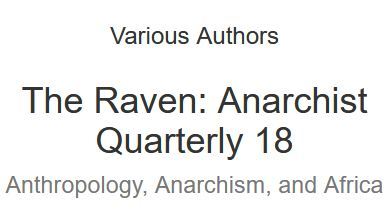

Epigenetics and politics
Our ability, as humans, to use intellect to our advantage is indisputable. However, our success is clearly not all we might hope for. In spite of this, a popular view is that all our problems can be overcome by intellect. Many people find the belief attractive because our intellect distances us from other animals and particularly those primates to which we are most closely related. Although it is overlooked that all these living species have existed far longer than we have without intellect. The demarcation has helped foster a belief in the general supremacy of intellect. The illusion of the great importance of intellect stems from our evolution. We feel, as individuals, we are numero uno. As long as collectively we were not, that worked fine. Now that we have become so, the belief is clearly to our detriment.
A misconception about intellect is that it evolved for the purpose of organising ourselves socially. There are no good reasons for thinking this and, if anything, the reverse is true. Our intellect has evolved as a biological device for working out and implementing survival strategies for our reproductive success as individuals. The logical conclusion has been to manipulate our environment on such a scale as to seriously alter it. Although our success or failure as a species can be seen to depend on the power of our intellects the view is not entirely correct. The greater part of our behaviour is not controlled by our intellects but is genetically determined in the same way as it is for other animals. Generally, people do not wish to understand the genetic control because it conflicts with their view of their intellectual supremacy.
Evidence for thinking there are unseen genes controlling our behaviour is overwhelming. The majority of the genes are not discreet units acting in a simple Mendelian fashion but are complex groups, polygenes, interacting with one another. They underpin all behaviour that is common to everyone and work within the constraints imposed by our environment. An obvious example of the effect of the environment is growth in body size which is dependent on both inheritance and diet. Intellect is genetically determined. It is purposeful and governed by self-interest. Those genes giving individuals the capacity for reason, for example, have been an evolutionary success. In conjunction with other genes they give individuals and their immediate kin who also bear them increased reproductive potential. Genes are not to help the people next door unless, of course, they are kin. A hard reality is that if these neighbours are not kin they are then normally viewed, from the point of view of genes, as something that is potentially exploitable. The interests of the genes and their bearers, our thinking bodies, cannot be separated.
Our behaviour, then, has evolved to increase our chances of survival not as a species but as individuals. Since species are composed of interbreeding individuals many of the characteristics will be common to species. Other genes to those controlling intellect and reason are important in determining general social behaviour. This behaviour was incorrectly thought by Kropotkin to have evolved for the benefit of the species. In defence of Kropotkin, our understanding of what is social is confused. Social insects such as ants and bees living in a colony are closely related to one another genetically. Again, tribes or small communities of humans consist of closely related individuals. The individuals, whether insect or human, under these conditions behave in an altruistic manner towards one another because this is in their gene's self-interest. With humans, the larger the group the less closely related individuals become. This must be true of people living in cities, for example. Social behaviour, then, evolved for the benefit of related individuals and their offspring. What is difficult to explain is why in modern societies people tend to behave as though they are genetically closely related when they are not.
Although all human behaviour is controlled by genes for the benefit of individuals, some behaviour is less gene specific than others. This indirect genetic control has been referred to by sociobiologists as epigenetic. The point at which epigenetic control merges with purely cultural behaviour, which is not genetically controlled, is fuzzy. Where this boundary lies is the nature versus nurture debate. It is a concern about the degree to which free will exists. Specifically, it is to what extent are morals, the way we think we should behave, determined by intellect. If there is a problem here it is to some extent contrived. Hume, the philosopher, pointed out that our moral sense revolves round how we use 'is' and 'ought'. Many of our cultural beliefs are based on what we think human behaviour ought to be rather than what it really is. Again, Huxley, the biologist, pointed out the paradox that cultural morality is opposed to natural morality or what is now known as epigenetic behaviour. The proponents of nurture, the ought faction, have fudged the issue for what appears to be a very good reason. They stand to gain from the confusion. Convincing people of how they ought to behave can be very self-advantageous. This cultural trick is the basis of the anarchist 'conspiracy theory' of politics.
#Africa#anthropology#England#English politics#epigenetics#field trip#genetics#Kenya#Kenyan politics#Malawi#Malawian politics#Uganda#Ugandan politics#Zimbabwe#Zimbabwean politics#music#Pëtr Kropotkin#poetry#Ruth Finnegan#The Raven#travel#africa#african politics#anarchism#anarchy#anarchist society#geopolitics#resistance#autonomy#revolution
4 notes
·
View notes
Text


Today as abundant and diverse as they were back on their home planet, the ants were among one of the most successful terrestrial invertebrates that had been introduced to HP-02017. Descended from a select few species, introduced as detritivores, pollinators and seed dispersers, these remarkable hymenopterans have since spread across the globe and occupied the niches similar to Earthly ants, such as seed-eaters, leaf-cutters, scavengers, predators, fungus farmers and even honeydew-ranchers: though the livestock of those ranchers are somewhat different, with the niches of sap-sucking true bugs instead filled by beetles and lepidopterans.
Some species, however, have begun taking on niches unlike any of their Terran forebearers. Raftants, aquatic species native to floodplains, developed specialized castes to act as oars and floaters to propel the colony along the surface. Perhaps stranger, at least for ants, are the lonestingers: ants that no longer live in colonies and have become solitary, with all individuals being winged and wasplike, no longer producing wingless sterile workers and taking on a niche akin to solitary wasps and bees.
One of the most unusual species in the Middle Temperocene, however, are the lime ants (Citromyrmex polyregina), an abundant and widespread species found all across South Ecatoria and the neighboring islands. Easily recognizable by their distinct yellow and black coloring, these ants are generalist omnivores diet-wise: consuming both plant and animal matter, though prioritizing carbohydrate-rich sugary food like fruit, sap and nectar for the active adults, while saving protein-rich seeds, bugs and meat to the larvae to encourage their growth. Like most ants, they communicate by pheromones, travelling across the forest floor in single file to scout out food sources they can carry back to the colony. They, too, have specialized castes for their vital activities, such as small minor workers that participate in foraging and nest cleanup, major workers that act as heavy lifters and back-up defense, and soldiers, armed with large heads and powerful mandibles who defend the nest, cut up large pieces of food, and even ferry around the smallest workers hitchhiking on their bodies.
But one truly remarkable characteristic of the lime ant is its behavioral flexibility, thanks to an unusual recessive gene, the Q gene, that causes the species to produce three separate types of queens, depending on which alleles they acquire. Each one lives a completely different lifestyle: one that affects the behavior of their corresponding colonies as well. These genes mix together during nuptial flights, where alates from different colonies pair together queens and drones that in turn, produce offspring that are homozygous QQ, heterozygous Qq, or homozygous qq. This is further complicated by male ants being haploid, and thus males are always only Q or q.
Homozygous QQ queens develop into what is known as the despot morph: a sedentary, highly-aggressive queen with a bulky body and large mandibles. Her colony dwells in a fixed, permanent nest that occupies the same space for as long as she lives, which can be as long as fifteen years. During which time, their nests can grow into immense proportions, spanning tunnels and chambers many meters across and inhabiting up to 100,000 inhabitants. Despot morph queens tolerate no other reproducing female in the colony, and a single despot morph queen rules supreme: aggressively killing any other breeding female in her nest, be they rival invaders, her own alate daughters, or a worker that starts laying unfertilized eggs. All of her genetically fatherless drone offspring will be Q drones. If she mates with a Q drone, all her female offspring will be despot morphs as well, and if she mates with a q drone, half her offspring will be despot morphs, and half her offspring will be Qq heterozygous: the communal morphs.
Communal morphs, the second kind, are long-bodied and capable of traveling long distances on foot, unlike the sedentary despot morph. These queens, the most common kind, are different from despot morphs in another way: they tolerate the presence of other communal morph queens, thus producing a polygyne colony that is much larger than those of despot morphs, with as many as nine or ten queens and colonies growing to up to a million or more. Their large colony size instead favors them to constantly be on the move, foraging for food in an area and building smaller temporary nests and moving on once food becomes depleted in migrations every few months, with the queens marching along in the swarms and the brood carried by the workers as they go. With multiple queens that can be regularly replaced as they die, the colony as a whole can survive significantly longer than those of a despot morph, which is important as their nomadic lifestyle also leaves them with a higher mortality rate due to exposure to environmental factors and predators. Being heterozygous Qq, they can produce either Q drones or q drones, and a communal morph queen that mates with a Q drone will produce half despot morph offspring and half communal morph offspring, and a communal morph queen that mates with a q drone will produce half communal morph offspring and half qq homozygous offspring: the usurper morph.
Usurper morphs are unusual as they do not build colonies at all: they never shed their wings and remain solitary, similar to the lonestingers. As they disperse from their parent colony during the nuptial flight, they mate once with a drone and store his sperm, but do not start laying eggs right away. Instead, over the course of their long lifespan which may last many years (but rarely as long as the despot and communal morphs), the usurper queen instead infiltrates the nests of the other two kinds shortly before the nuptial flights begin, lays her eggs inside, and leaves all the effort of childcare to the workers of the colonies. Covering the eggs with pheromones to trick the colony into accepting them, she functions in essence as a solitary brood parasite whose progeny are raised by others. As she does not form a colony: none of her offspring become workers and soldiers, and instead always hatch into queens or drones: drone offspring are always q as they are born from unfertilized eggs. If she mates with a Q drone, half of her daughters will be communal morphs and half will be usurpers, and if she mates with a q drone, all her daughters will be usurper morphs.
This unusual arrangement likely evolved as an advantageous trait due to fickle, changing seasons and environments, allowing the species as a whole to persist. When food is plenty despot morphs become more common, able to defend a productive patch of land. When food is scarcer, communal morphs dominate, able to travel long distances to scout out new foraging grounds. And when times are the toughest, the most common morph becomes usurpers: being solitary, they need less food than a whole colony and can depend on the few hardy colonies to rear their young. Through a complex set of environmental dynamics, genetic inheritance, and competition between the queen types, the lime ant proves itself an adaptable and tenacious species that finds great success in the forest floor ecosystems of South Ecatoria.
Despite its complicated and bizarre life history, however, the local northhounds that occupy its range, in particular the vulpins, have found a rather mundane use for this abundant species. When threatened, major workers spray formic acid from specialized nozzles in their abdomens as a ranged mechanism. This, however, has been exploited by the vulpins who intentionally provoke the ants to get them to spray their acid onto food items: in effect acting as both a preservative to ward off fungal and bacterial growth on food, and as well as a seasoning that imparts a sour, citrus-like flavor onto said food. While toxic in large quantitities, the ants' formic acid is harmless in small amounts to larger creatures like the northhounds: making for a surprisingly ideal additive in the vulpins' cultural fondness of imparting different tastes in their primitive form of 'cuisine'.
-------------
#speculative evolution#speculative biology#speculative zoology#spec evo#hamster's paradise#species profile
97 notes
·
View notes
Text
ARTHROPOD SURGEONS: AMPUTATION BY FLORIDAN ANTS
It seems like a scene from an adventurous film: an injured worker performs an emergency amputation on one of his colleagues. But this is not about human beings – it is a behaviour seen in ants.
Florida carpenter ants, scientifically known as Camponotus floridanus displays a phenomenal skill of life-saving amputation on their injured nestmates. This is a remarkable behaviour, as the first known instance of non-human animals showing amputations to increase the survival of others.
Researchers found that different ant species secrete antimicrobial substance through their mouth to cleanse injuries and prevent potential infections. The compounds are produced by metapleural glands. Metapleural glands are the glandular structures exclusively present in ants which sanitize the ants by secreting the chemical compound which prevents the bacterial & fungal growth on ants. But over time, some species including Camponotus floridanus, have evolutionarily lost them. Hence, an experiment was conducted on how an ant species that lack the ability to produce the anti-microbial compound for treating battle-field injuries, would care for their wounded mates & they were amazed on what they observed: a kind of surgical mediated response formerly only displayed by humans.
The process of amputation involves one ant gnawing off the affected leg of a nestmate, which typically takes about 40 minutes to complete. The procedure begins with the healthy ant licking the wound before moving up the leg to bite off the limb at the joint. Studies have shown that ants perform amputations selectively, primarily focusing on injuries located on the upper part of the leg, such as the femur as these have muscles in the femur, that keep haemolymph flowing. When they sustain a femur or upper leg injury, the flow of haemolymph is reduced. Thereby, bacteria find it difficult to move from the wound into the body. In such cases, the possibility of infection is very low if the entire leg is amputated instantly. When the injuries are sustained in lower legs such as tibia, bacteria can easily enter its body rapidly. As a result, the chance of amputation being successful is narrow. Thus, tibial injuries only receive basic wound care. The ants, on some level, seem to assess the severity of injuries to perform the potent course of treatment.
Experimental findings reveal that ants undergoing this intervention showed an impressive survival rate of approximately 90-95% when treated for upper leg injuries while untreated injuries had lower survival rate, establishing this as a significant behaviour for maintaining ant colony.
The behaviour of amputation leads to various intriguing queries related to cognitive capabilities within ant colonies. Ongoing investigations intend to study similar surgical actions in other species & the underlying mechanisms through which Floridan carpenter ants demonstrate this intricate wound care.
References – Frank, E.T., Kesner, L., Liberti, J. et al. Targeted treatment of injured nestmates with antimicrobial compounds in an ant society. Nat Commun 14, 8446 (2023). https://doi.org/10.1038/s41467-023-43885-w

3 notes
·
View notes
Text
Optimism dries up in Amazon as Lula drifts from climate priorities
Brazil’s president inspired hope a year ago but approval of a new highway shows he remains a concrete-and-oil state builder

What a difference a year makes in the Brazilian Amazon. At the start of 2023, I wrote about the green shoots of the rainy season and feelings of hope inspired by the new president, Luiz Inácio Lula da Silva, who promised to strengthen Indigenous rights and aim for zero deforestation. Twelve months on, both the vegetation and political optimism are drying up.
The most severe drought in living memory has finally been broken, but the rains are late and weak compared with previous years. The Xingu River is far lower than normal for January. The pulse of forest growth is also fainter – the new vegetation does not push out as far into the road as it did last January. The neighbouring cattle pasture is faring even worse. The forage grasses, known as capim, were so severely burned that they have not grown back, leaving the hillsides brown and the cows emaciated. Several of the poor, skeletal beasts have escaped their fields and wandered towards our community in search of food. Local people say more than a dozen cows have died of starvation at this one ranch, and countless others elsewhere.
Less obvious, but in many ways more worrying, is the dearth of leafcutter ants. These large-mandibled insects are usually everywhere, slicing and carrying vegetation in columns to create fungal gardens in their nests, which spread out over dozens of metres in Gaudi-esque towers and mounds. Entomologists say these ants have the second most-complex societies on Earth, after humans, and they are the dominant herbivores in the South American tropics, trimming about a sixth of all the leaves produced in the forest. This stimulates new plant growth and enriches the soil. Not for nothing have these ants been described as ecosystem engineers.
Each day, I pass three big nests of leafcutters on my daily walk with the dogs. Just over a year ago, I ventured too close during the annual revoada, when the winged females set out on their nuptial flights followed by clouds of males. It is a sensitive time for the insects and the soldier ants were in fiercely protective mode. I was driven away with my foot bloodied and me howling with pain. Despite this, I have never ceased to admire these tiny, powerful creatures so I was dismayed to discover that all four nests are apparently lifeless. The mounds appear deflated, there is no newly excavated soil at the entrances, and not a single leafcutter ant to be seen. This is bizarre as a healthy colony can have 3.5 million members and they never previously stopped working. Entomologists tell me they may have relocated or been wiped out by the prolonged dry season. It is an alarming reminder that the weakening of forest resilience takes many forms and the impact of the drought remains incalculable.
Human-caused global heating and deforestation are parching the forest – and not just over the last year. Scientists have found the Amazonian dry season is getting hotter, drier and longer. Fifty years ago, it lasted four months. Now, it is five. This is causing a die-back of trees and other species that are being pushed beyond their survival thresholds. An ecosystem-wide collapse that would turn the Amazon into a savanna draws ever closer.
Lula knows this. In a speech at Cop28 in Dubai last November he told the world he was shocked that the region’s rivers, which are the greatest freshwater source in the world, are at their lowest level for more than 120 years. He said this was a global climate problem and called on other countries to make a greater effort. “Even if we do not cut down any more trees, the Amazon could reach its point of no return if other countries do not do their part.”
But his own government’s efforts to protect the forest and its people have been mixed. A first-year report card for Lula would show progress compared with the low benchmark set by the previous far-right administration of Jair Bolsonaro, but also failed promises, political weakness and worrying signs of regression.
Continue reading.
#brazil#brazilian politics#politics#environmentalism#environmental justice#mod nise da silveira#image description in alt
10 notes
·
View notes
Text

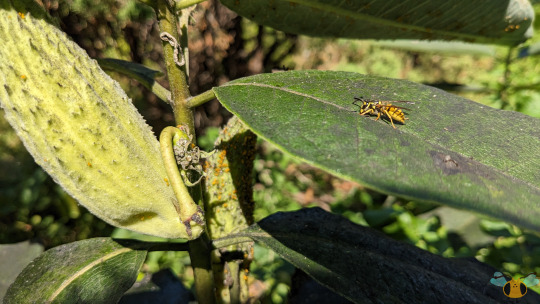




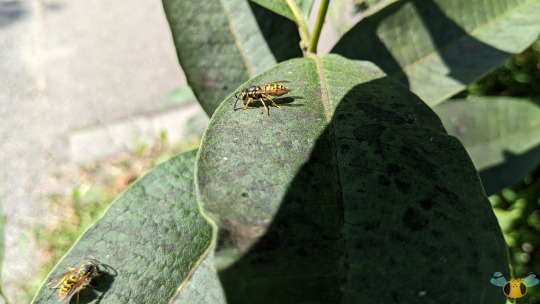
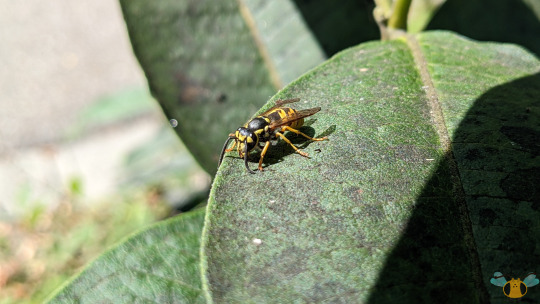

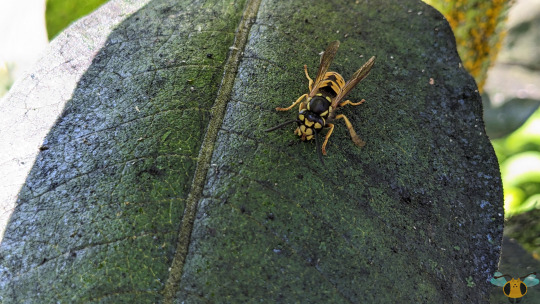
German Yellowjackets and Milkweed Aphids - Vespula germanica & Aphis nerii
While the weather was sunny when these pictures were taken, summer never lasts forever and must always give way to autumn. As such, insect competition for food begins to increase as everyone tries to get their share before the cold sets in. For social insects living in colonies, things are much more precarious since there are many individuals to account for, including developing larvae, the active queen and young queens on the horizon and fertile males later on. These German Yellowjacket (you can tell based on their abdomen's pattern primarily) workers must prevail for their nest and seek out any food sources they can, which is just one explanation for why they like to buzz around barbeques and fruit stores. In this case, these Wasps have found a miraculous (if somewhat dirty) food source coating these leaves. This is the sugary liquid known as honeydew and its presence has attracted fungus to the milkweed, ravaging the leaves with sooty mold. This isn't a pretty picture for gardeners, as mold can be difficult to manage, and the Wasps won't make the matter any easier.
Do note that this type of mold isn't infectious to the plant itself, but the darkening of the leaves can affect the plant's growth and potentially its ability to photosynthesize. This is of little concern to these Wasps as they open their mandibles and hurriedly lap up all the sugary goodness they can! So where did all this honeydew come from? As mentioned on this blog time after time, when herbivorous Hemipterans feed on the inner liquids of a plant, they excrete excess honeydew as a waste product. To satisfy their diets nutritional needs, sap-sucking Plant-Parasitic Bugs must drink a lot of sap. However, the amount of sugar-like nutrients in the sap is too much for such a feeding (protein and minerals are more essential), so the excess sap byproducts are dribbled out from the insect's rear.
One feeding insect may not cause too much of a fuss, but Aphids love to aggregate (it's safer and their parthenogenic reproduction helps speed up the process), so you can visualize based on these pictures what happens when many feed from one leaf. There was evidence of this feeding by way of shed exoskeletons left behind. Not only are Milkweed Aphids feeding from the leaves, but the milkweed seed pods are well, riddling them with fungus. That's just the way of it, one insect feeds and other insects are drawn to the scent of sweet sugar. However, unlike many species of Ants which tend to Aphids and protect them in order to collect the honeydew for themselves, Wasps don't form such relationships. Rather, these Yellowjackets are taking advantage of an opportunity. They aren't tending to the Aphids, but they likely won't bother eating them either, if only for their unpleasant toxicity. Since that's the case, these Aphids shouldn't expect any protection from a Yellowjacket worker, which left them exposed to the hungry Asian Ladybug approaching them in Picture 1.
Pictures were taken on September 3, 2024 with a Google Pixel 4. Happy First day of Autumn!
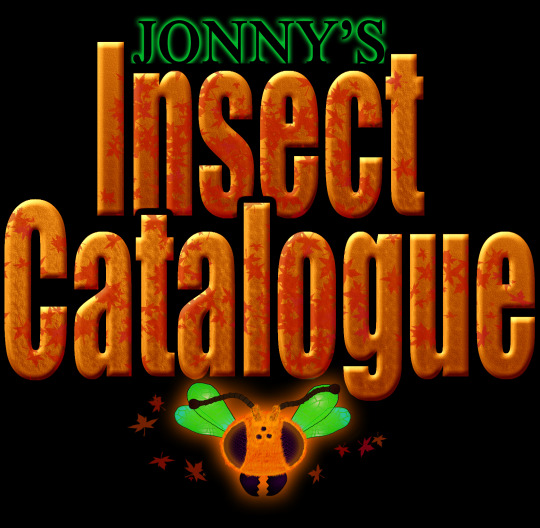
#jonny’s insect catalogue#ontario insect#wasp#aphid#yellowjacket#german yellowjacket#milkweed aphid#true bug#hemiptera#hymenoptera#sternorrhyncha#insect#insect aggregation#toronto#september2024#2024#first day of autumn#entomology#nature#invertebrates#arthropods#asian ladybug#photography#animals
4 notes
·
View notes
Note
That poor dude...you answered to him in the best way possible. But I have a feeling that he's young like maybe at least 18 -20 still learning so I can't really blame him. I was once in his position I said something like that as well. It was because I was lost because my family was homophobic as well so I said random crap when I was his age, im still young myself only 23 so still learning myself but i have faith in him I hope that break he said he's taking helps him out a little. I'm just glad nobody is legit angry or him or well I hope they aren't, some people can't express themselves fully like that. Especially if you Live in a state where you really can't but I try but I live in Texas so...call it a "gay intuition" but I feel like it's because he also lost someone important to him that he was really close to and he might also live somewhere that he can't really show himself and he's scared too because looking through the post he made on your stuff he seems liked a good dude he just needs someone there like a lot of people do because like another anon said some people can't really express themselves. So when that no56yu dude returns I hope he's somewhat better, because I also get it somethings do get screwed into your brain, you try to get it out of your mind but something is stopping you from doing it. Maybe thay why he said that? Idk I'm just saying some stuff I had from my own experience
Thank you sm for your kind words sugar! I do try to formulate myself in a way that serves to educate rather than attack because we won’t get far with that mindset
I also understand when you say that he’s young he has a lot to learn, we all come from different walks of life I can’t compare my growth to anyone else and be like “why didn’t you educate yourself faster” however it is important that we do try to educate each other and start to learn about our history and it’s clear that this isn’t ops own thoughts like this is the usual argument you’ll see all across social media when pride month is mentioned any negative feelings aren’t specifically targeted at op but rather at society for making someone who is part of our community speak/ think this way
Pride month is the perfect month to educate yourself about lgbt history and I do want to say how important it is to educate yourself because what happens if you don’t is you’ll have a group of oppressed people who will attack people in their own community
I don’t rmr the term but someone equated it to ants in a colony where they’ll kick out the weak ants so the colony doesn’t suffer. That’s why for example trans ppl will talk down on people who use neopronouns bc “it’s pushing it” “yeah these aren’t real pronouns” they fear of losing the sliver of privilege that they have and that’s why they attack their own
Same with gold star lesbians why do you think they exist? Because society has told them that of course every woman wants a man and when they’ve finally convinced society that there’s a group of people who don’t want anything to do with men, you’ll get gold star lesbians who fear that lesbians who have been with men previously will ruin the little privilege they have
I do want to say that if you continue life that way it’ll come a day where you’ve erased your own identity despite staying in the frame of what’s considered acceptable
5 notes
·
View notes